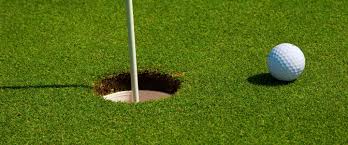More Than Just Chasing a Ball With a Stick

More Than Just Chasing a Ball With a Stick
I’ve had a special relationship with the game of golf since my earliest memory. Beginning with our escapes to the driving range or putting green from family functions with my paternal grandfather, Grampy, to the special relationships I built with both friends and family anchored by a mutual love of the game, golf always felt like a sacred activity. As a kid from a sports loving and family that values participation in sports, hockey and baseball were staples of my youth, but I always held golf in the top spot. It probably didn’t hurt that my being extremely vertically challenged didn’t limit my competitive chances on the golf course nearly as much as in other sports!
In a previous post (“Not Just Sports”), I talked about how valuable sports, the arts, or any other extracurricular activity for which a passion is had can be in helping to develop work ethic and commitment for kids. And while entering the age old debate of whether or not golf is “really” a sport is beyond the scope of this blog, I’m instead focusing on what a wonderful activity golf is for gaining valuable life skills and developing relationships. So what is it that makes golf, the ultimate of individual sports, ironically strengthen interpersonal bonds; and what’s so unique about this game whose modern version is thought to have begun in the mid 15th century in Scotland that lends to its’ building of character?
There’s is a saying that’s been around far longer than I that goes something like this: If you really want to get to know someone, play a round of golf with him or her. This doesn’t mean, of course, that unless you’ve teed it up with someone that you can’t truly have knowledge of their intricacies, rather a round of golf will reveal a lot about a person’s personality. I find the emotions’ one feels during a round of golf a great facsimile to the ups and downs of life. This isn’t to say the disappointment of a poor shot or a dreaded case of “yips” on the putting green equate to many of the difficult emotions one feels in a lifetime, just that rather a full range of emotions arise over a 4 or so hour round of golf. To watch someone’s response to feelings ranging from joy to anger, total relaxation to duress, and his or her outward response and accompanying interpersonal behavior is telling.
I was fortunate to get an early introduction to golf and the opportunity to devote time to it, and while I certainly wasn’t headed for the World Golf Hall of Fame or a career as touring pro, I managed to play fairly well. After my car crash on 7/4/06, I went from a low single-digit handicap having just played collegiate golf to a hemiplegic with left-sided paralysis, needing my mom to Velcro my left hand on the club in order to play. What began as playing each hole from the 150 yard marker with my Velcro assisted grip, to shooting a legitimate 140 in my first full 18 hole round as a brain injury survivor, has evolved to my currently playing “bogey golf”. It’s interesting to note that I have more fun playing now than I ever did trying to win a tournament or shoot under par!
Playing golf, at least improving ones’ game, is really pretty similar to the process of recovering from a brain injury, or for that matter, an individual’s self-improvement journey throughout a lifetime. For one thing, they’re both never-ending processes without finite endpoints where perfection is achieved, or even distinct completeness. And while I hate to make generalities; I know that for me not knowing or having a desirable result marking completion, without the possibility of perfection makes giving consistent effort in any task a challenge. In my almost 40 years of life, golf has been the ultimate teacher of finding that sweet spot of continued striving for improvement while enjoying the journey!